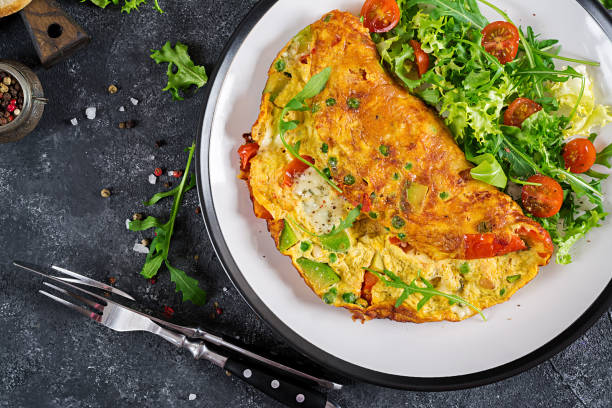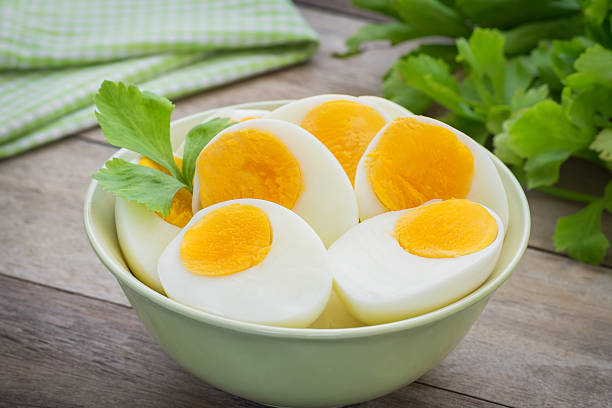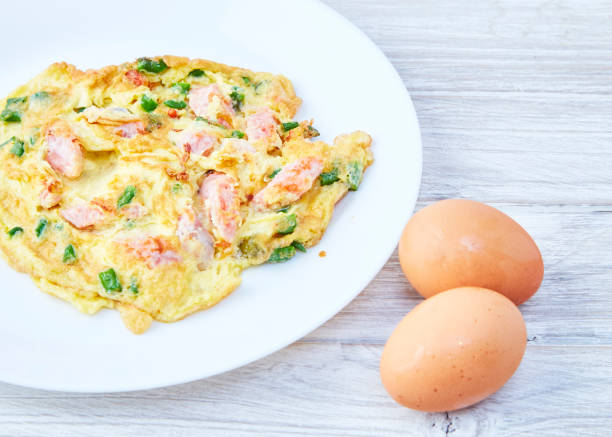Omelette vs boiled egg Which is better for weight loss Eggs have been a superstar of the breakfast table for centuries. Whether it’s the street-style masala omelette sizzling on a hot pan or a simple boiled egg popping out of its shell, eggs never fail to delight. But when the scale refuses to budge, fitness lovers often ask the million-calorie question: Which is better for weight loss—an omelette or a boiled egg
This debate is more than just taste; it’s about cooking technique, hidden fats, and how your body burns calories. Both options are loaded with high-quality protein that keeps you full, supports muscle repair, and controls hunger hormones. The catch is how you prepare them. Oil, butter, cheese, or too much salt can sneak extra calories into your morning plate. To help you crack this mystery, let’s break down the nutritional showdown and find out which egg dish deserves the breakfast crown
2. Boiled Egg Basics – A Pure and Powerful Protein Punch
If simplicity had a mascot, it would be the boiled egg. Boiled eggs require no oil, no butter, and no fancy kitchen tricks—just water, a pot, and a little patience. One large boiled egg contains roughly 70 calories, about 6 grams of protein, and a treasure chest of vitamins like B12, D, and minerals like iron and selenium.
Because no extra fat is added during cooking, boiled eggs deliver clean nutrition with minimal calories, making them a go-to snack for people on calorie-restricted diets. They are also portable—toss them in a lunchbox, peel, sprinkle a pinch of black salt or pepper, and enjoy. For weight loss, boiled eggs offer what fitness trainers love: high satiety with low energy density. That means you stay full longer without eating a mountain of food. Busy professionals, gym-goers, and even students can rely on boiled eggs as an instant protein fix

3. Omelette Charisma – Flavor, Flexibility, and a Calorie Twist
Now let’s talk about the omelette, the drama queen of the egg world. From fluffy French folds to spicy Indian masala versions, omelettes tempt your taste buds with endless possibilities. A basic omelette made from two eggs has about 90–120 calories before you add oil or fillings. Here’s the twist: cooking requires a little fat—usually a teaspoon of oil, ghee, or butter—which adds 40–50 extra calories.
Throw in cheese, potatoes, or sausages, and the numbers can skyrocket to 200 calories or more. But the omelette also offers unbeatable versatility. Add veggies like spinach, tomatoes, onions, and bell peppers, and you’ll boost fiber, vitamins, and antioxidants while keeping protein levels high. A well-planned vegetable omelette cooked with minimal oil can still be a healthy, weight-friendly option. The key is control: one drizzle of oil, not a waterfall
4. Protein Power – Same Muscle Magic, Different Delivery
Here’s the good news: when it comes to protein quality, both boiled eggs and omelettes are champions. Each large egg—no matter how you cook it—contains about 6 to 7 grams of complete protein with all nine essential amino acids. Protein is critical for weight loss because it stabilizes blood sugar, reduces cravings, and preserves lean muscle during calorie deficits. The difference lies in what tags along. Boiling keeps fat minimal, while omelettes might carry extra oil or butter. But if you use a non-stick pan and minimal fat, the protein delivery is practically identical. So, whether you peel or flip, your muscles will thank you

5. Fat Facts and Hidden Calories
Fat is not the enemy, but it can sabotage your calorie budget if you’re not careful. A boiled egg naturally contains about 5 grams of healthy fat, mostly in the yolk, along with cholesterol that nutritionists now agree is not harmful in moderation. In contrast, a typical omelette can double the fat content depending on the cooking oil. One tablespoon of oil adds roughly 120 calories and 14 grams of fat—and most home cooks pour more than they realize. Using a spray of olive oil or a teaspoon of ghee keeps the flavor while cutting excess calories. If weight loss is your primary goal, this tiny tweak can mean the difference between progress and plateau
6. Vitamins, Minerals, and Micronutrient Magic
Both boiled eggs and omelettes are nutrient-dense powerhouses. They deliver Vitamin B12 for energy, Vitamin D for bone health, choline for brain function, and iron for oxygen transport. Cooking method can slightly affect certain heat-sensitive vitamins like B6, but the difference is minimal. Adding vegetables to an omelette enhances micronutrient diversity—think antioxidants from spinach, lycopene from tomatoes, and vitamin C from capsicum. Boiled eggs can also be paired with a side of salad to achieve a similar effect. In the end, micronutrient content depends more on what you add than on whether you boil or fry
7. Satiety Score – Fullness That Fights Cravings
Weight loss is not just about calories; it’s about hunger control. Eggs naturally rank high on the satiety index because protein slows digestion and signals fullness to the brain. Boiled eggs, eaten plain, provide a quick and steady satiety boost with no added fats. Omelettes, thanks to their volume and vegetable content, can be even more filling if cooked smartly. A veggie-packed omelette with minimal oil might keep you satisfied for longer than two plain boiled eggs, reducing the urge for mid-morning snacks. The secret is fiber—vegetables add bulk without adding many calories

8. Convenience vs Creativity – Lifestyle Matters
Boiled eggs win the convenience game. They can be prepared in batches, stored in the fridge for up to a week, and eaten on the go. Perfect for office workers, travelers, and anyone too sleepy for morning cooking. Omelettes, on the other hand, demand fresh preparation but reward you with culinary creativity. You can tweak flavors daily—herbs one day, mushrooms the next. Your choice depends on your lifestyle: if mornings are chaotic, boiled eggs are your best friend; if you love a slow, savory start, an omelette might make breakfast feel like a weekend feast
9. Expert Tips for a Weight-Loss Friendly Omelette
Want to enjoy an omelette without guilt? Follow these simple hacks:
- Use a non-stick pan and limit oil to one teaspoon or use a cooking spray.
- Add plenty of vegetables—spinach, tomatoes, onions, peppers—to increase fiber and volume.
- Skip heavy cheese and processed meats, which add unnecessary fat.
- Season smartly with herbs, black pepper, and a pinch of salt instead of high-sodium sauces.
With these tweaks, your omelette can stay under 150 calories while providing a colorful nutrient boost.
10. Verdict – Who Wins the Weight Loss Crown
So, in the epic omelette vs boiled egg for weight loss showdown, who takes the trophy? If your goal is strict calorie control with zero fuss, boiled eggs are the undisputed winner. They’re lean, portable, and nearly impossible to mess up. But if you crave variety and enjoy a hearty, fiber-rich breakfast, a vegetable omelette cooked with minimal oil is equally effective. The real champion is balance. Alternate between both to keep your taste buds happy and your diet sustainable. On busy mornings, grab a couple of boiled eggs. On leisurely weekends, whisk up a colorful omelette. Either way, eggs remain one of the smartest, most satisfying foods for anyone on a weight-loss journey
7 amazing benefits of drinking cinnamon water
Disclaimer
The tips and suggestions mentioned in this article are intended for general informational purposes only. Before starting any fitness program, making changes to your diet, or trying any remedies related to health conditions, please consult your doctor or a qualified healthcare professional. Dr. You does not verify or endorse the authenticity of any such claims made herein

